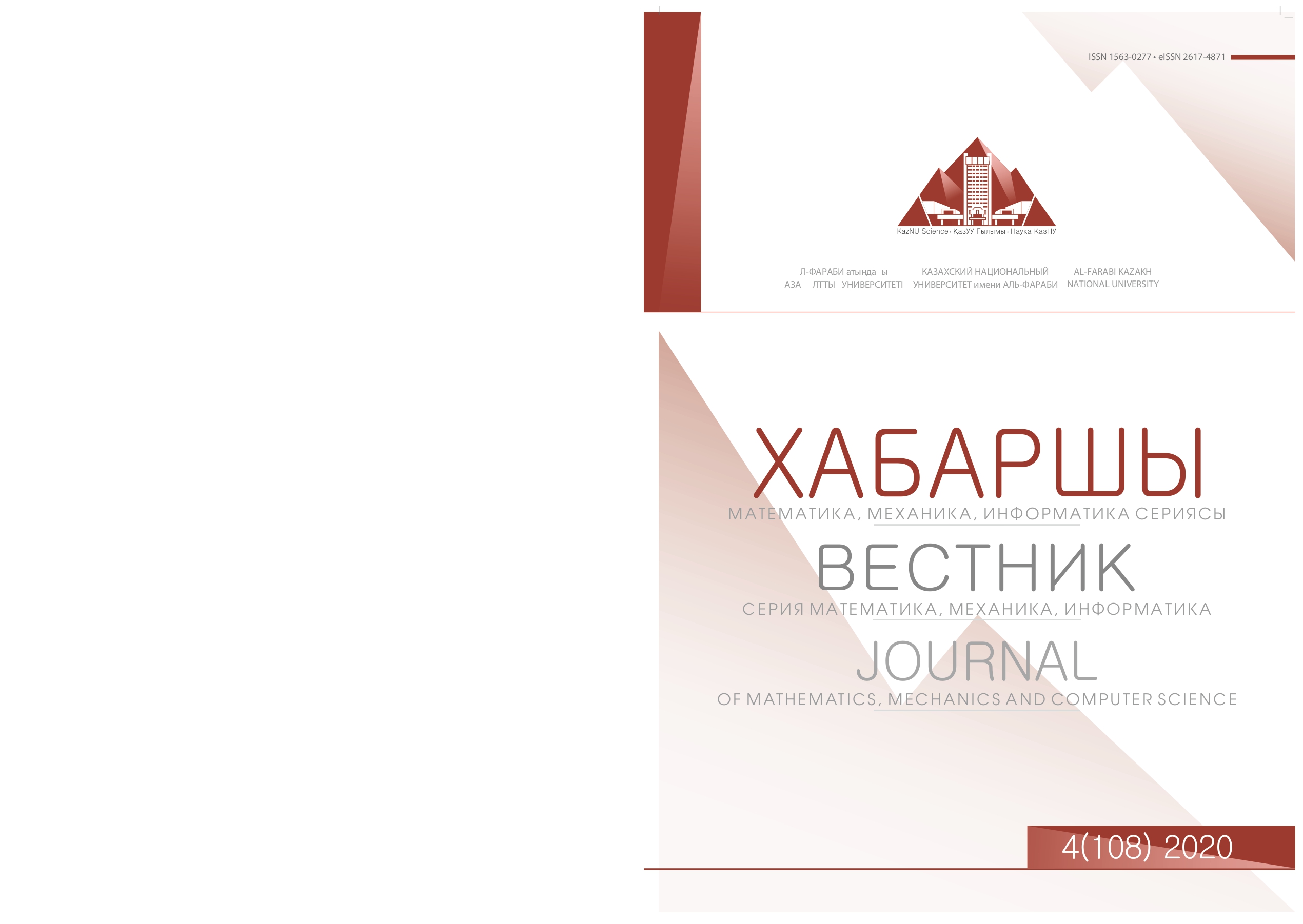Kinematic analysis of a new 3-PRRS tripod type parallel manipulator
DOI:
https://doi.org/10.26577/JMMCS.2020.v108.i4.05Keywords:
tripod, parallel manipulator, working area, Jacobi matrix, equations for the closed loops, kinematic analysisAbstract
The closed kinematic chain increases the strength of the parallel manipulator (PM) and reduces the loads applied to the drive links. High carrying capacity and good dynamic performance allow the use of such systems in many industries. Currently, in practice, mainly PM with six degrees of freedom and six legs (hexapods), based on the Stewart platform, are used. Since the moving platform of such PM is driven by six legs, its workspace will be small. An increase in the workspace of a parallel robot can be obtained by reducing the number of legs connecting the moving platform to the base. PM with three legs (tripods) usually has three degrees of freedom, and, they cannot fully provide a given movement of a moving platform with six degrees of freedom. The paper presents a new 3-PRRS type tripod with six degrees of freedom and three legs, each of which consists of PRRS kinematic chains (P - prismatic, R - revolute, S - spherical kinematic pairs). The purpose of the work is to determine the workspace and to solve the direct and inverse problem of speed of the tripod. It is known that revolute kinematic pairs restrict the movement to the legs of this tripod, therefore, the workspace was determined taking into account the relationship between the parameters that determine the position XP,YP,ZP and orientation ψ,θ,ϕ of the moving platform center in space. The Jacobi matrixes were derived from the equations of the closed loops, the direct and inverse velocity problems of kinematics are solved by adding the constraints equations of revolute kinematic pairs to the matrix. Thus, in the new PM 3-PRRS type tripod with six degrees of freedom, the number of legs was reduced from six to three compared to the Stewart platform, and the workspace was increased by replacing the prismatic kinematic pairs by revolute kinematic pairs.
References
[3] Lung-Wen Tsai, Robot Analysis: The Mechanics of Serial and Parallel Manipulators (John Wiley & Sons, Inc., New York/Singapore/Toronto, 1999).
[4] Jorge Angles, Fundamentals of Robotic Mechanical Systems. Theory, Methods, and Algorithms, Fourth Edition (Springer, 2014).
[5] Mekhanika promyshlennyh robotov. V trekh knigah / Pod redakciej K.V. Frolova, E.I. Vorob’eva [Mechanics of industrial robots. In three books / Edited by K. V. Frolov, E. I. Vorobyov] (M.: "Higher School 1988) [in Russian].
[6] K.C. Gupta, Mechanics and Control of Robots (Springer - Verlag, New York, 1997).
[7] M.W. Spong, S. Hutchinson, and M. Vidyasagar, Robot Dynamics and Control (John Wiley & Sons, Inc., 2006).
[8] Jean - Pierre Merlet, Parallel Robots (Kluwer Academic Publishers. Dordrecht/Boston/London, 2004).
[9] Marco Ceccarelli, Fundamentals of Robotic Mechanical Systems (Kluwer Academic Publishers. Dordrecht/Boston/London, 2004). [10] Parallel Robots: Theory and Applications. Series Editors: Merlet J.P., Briot Se´bastien, Martinet P. (Springer, 2018).
[11] D. Stewart, "A Platform with 6 Degrees of Freedom", Proceedings Institution of Mechanical Engineers, London 180(1965), 371-386.
[12] Li Yangmin, Xu Qingsong, "Kinematic analysis of a 3-PRS parallel manipulator", Robotics and Computer-Integrated Manufacturing 23(2007), 395-408.
[13] C.M. Gosselin, J. Angeles, "The optimum kinematic design of a spherical three - degree - of freedom parallel manipulator", Journal of Mech Transm Autom Des 111:2(1989), 202-207.
[14] C. Gosselin, E. St-Pierre, and M. Gagni,"On the development of the Agile Eye", IEEE Robotics & Automation Magazine 3(1996), 29-37.
[15] Almas Shintemirov, Aibek Niyetkaliev and Matteo Rubagotti, "Numerical Optimal Control of a Spherical Parallel Manipulator Based on Unique Kinematic colutions", Journal of LATEX Class Files 13:9(2015), February 2015.
[16] R. Clavel, Device for displacing and positioning an element in space (WIPO Patent, W087/03528).
[17] L.W. Tsai, F. Tahmasebi, "Synthesis and Analysis of a New Class of Six - Degrees - of - Freedom Parallel Manipulators", Journal of Robotics Systems 10:5(1993), 561 - 580.
[18] R.I. Alizade, N.R. Tagiyev, J. Duffy, "A Forward and Reverse Displacement Analysis of a 6 - DoF In-Parallel Manipulator", Mechanism and Machine Theory 29:1(1994), 115-124.
[19] C.L. Collins, G.L. Long, "The Singularity Analysis of an In - Parallel Hand Controller for Force - Reflected Teleopation", IEEE Transactions on Robotics and Automation 11:5(1995), 661 - 669.
[20] C. Cleary, M. Uebel, Jacobian Formulation for a Novel 6 - DoF Parallel Manipulator (IEEE International Conference on Robotics and Automation, 3, 1994), 2377 - 2382.
[21] Zh. Baigunchekov, M.A. Laribi, A. Mustafa, R. Kaiyrov, B .Amanov, A. Kassinov, "Geometry and Inverse Kinematics of 3-PRRS Type Parallel Manipulator", Advances in Intelligent Systems and Computing 980(2020), 12-18.
[22] Zh. Baigunchekov, R.A. Kaiyrov, "Direct kinematics of a 3-PRRS type parallel manipulator", International Journal of Mechanical Engineering and Robotics Research 9:7(2020), 967-972.
[23] Zh. Baigunchekov, M.A. Laribi, M. Izmambetov, Zh. Zhumasheva, R. Kaiyrov, "The First Type of Singularity of a 3-PRRS Parallel Manipulator", Mechanisms and Machine Science 84(2020), 356-363.
[24] Zh. Baigunchekov, R. Kaiyrov, Workspace of a 3- PRRS type parallel manipulator (EasyChair Preprint, №2271).




